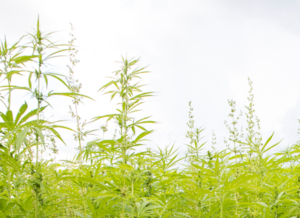New crop & algae-buster?

Hemp Plant, courtesy of the University of Florida Institute of Food and Agricultural Sciences
The U.S. Department of Agriculture has given the okay for Florida farmers to begin growing hemp under the state’s industrial hemp program that’s been under development for several years. It could not only open a new crop at a time when citrus continues its decline, but could also have applications in our yearly battle against algae and red-tide.
Industrial hemp is a Cannabis sativa plant that has been cultivated for thousands of years as a fiber and grain crop. Its modern applications include textiles, building materials, seed oil, and essential oil. It is not marijuana, as its THC content (the psychoactive component of pot) is far less.
“Florida’s state hemp program will become a model for the nation, will set a gold standard for this emerging industry, and will create billions in economic opportunity for Florida,” said Agriculture Commissioner Nikki Fried in a release. “As our economy deals with the impacts of COVID-19, this approval will give our agriculture industry a new alternative crop for many years to come.”
Both the University of Florida and Florida A&M University are growing different varieties of industrial hemp to determine which is most economically viable to grow.
There’s an industrial hemp pilot project that holds promise to beat out the Karenia brevis algae produced from Lake Okeechobee in South Florida that’s believed to contribute to annual Red Tide in the Gulf of Mexico. A research partnership between South Florida State College and the nonprofit Hemp4Water is trying to determine how much of the algae’s main nutrients – nitrogen and phosphorus – can be removed from polluted water by hemp. The pilot is underway now on two ponds at the College’s Avon Park campus. You can read more here.
The Florida Department of Agriculture and Consumer Services will begin accepting applications to grow industrial hemp today. More information about growing hemp in Florida can be found here.
LMA Newsletter of 4-27-20

